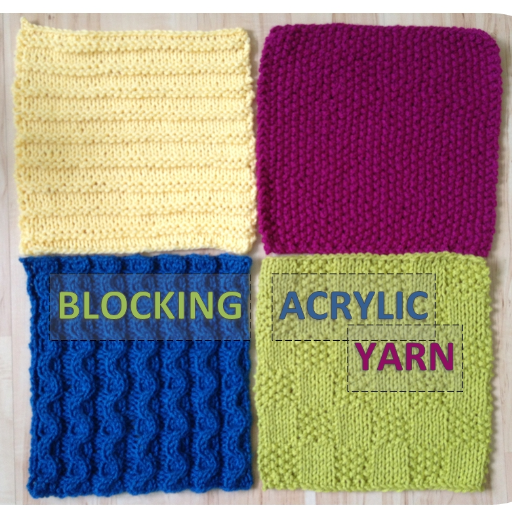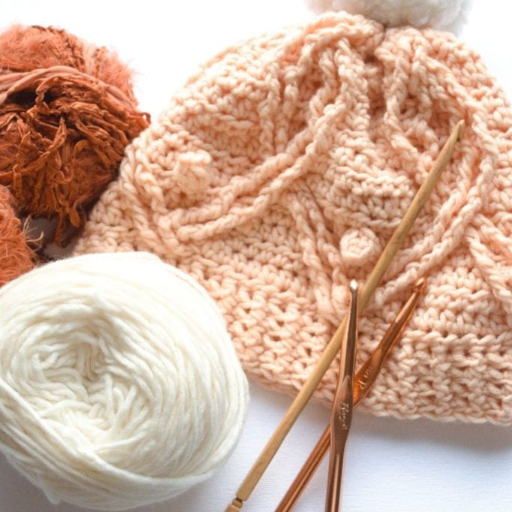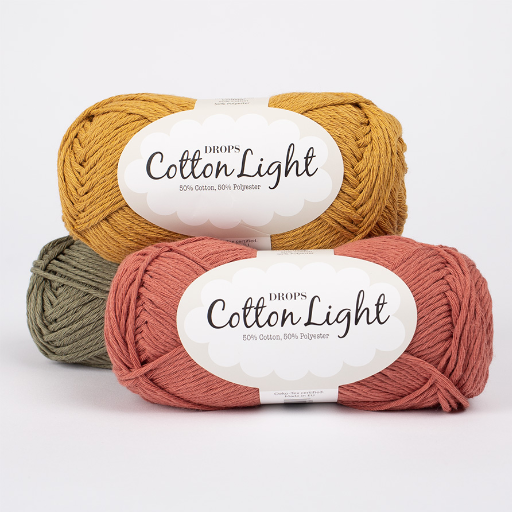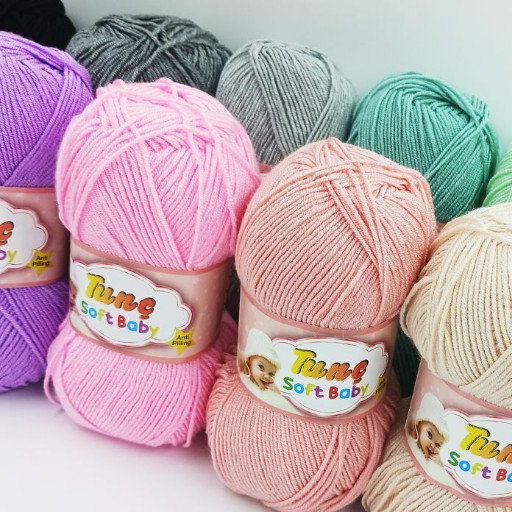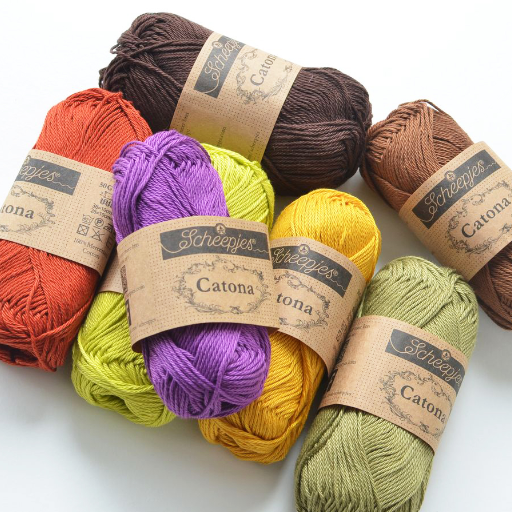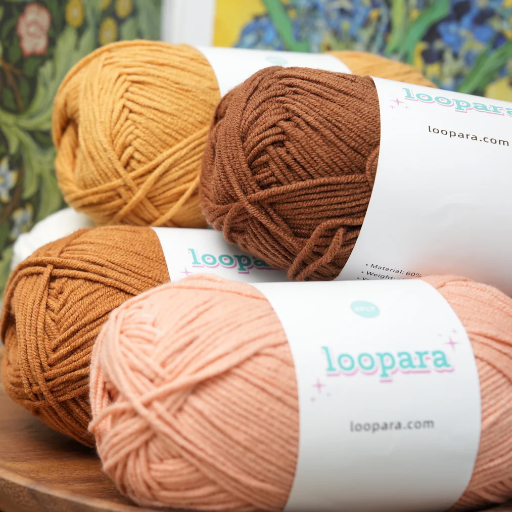Using Viscose yarn is revolutionizing the textile industry as it combines the sumptuous softness of wool with the durability and longevity of synthetic fibers. This advancement contributes to strengthening the quality of fabrics and broadens prospects within modern fashion and design. This blog aims to explain the remarkable features and benefits of viscose yarn to its readers, including textile manufacturers, fashion designers, or any general enthusiasts wanting to know about the materials used in the clothing they wear. Along with the sustainable production methods, we will discuss the growing use of this hybrid material in the industry due to its unmatched efficiency. Prepare yourselves to delve into the creativity, artistry, and mechanisms flowing within viscose yarn and everything it can do to transform fabric engineering.
What is Viscose Fabric?

A type of semi-synthetic material that comes from cellulose, wood pulp is Viscose’s source. It is constructed by adding chemicals to produce cellulose into fibers which can be woven into fabrics and spun into yarns. One of the most important properties of viscose is its silk-like texture which shows softness. It is popular due to it being lightweight and breathable as well. Viscose can also mimic several materials such as cotton, wool or silk, therefore enabling it’s extensive versatility. Even with the processing, viscose is still absorbent and comfortable, qualities which help it to be one of the most used materials in fashion.
How is Viscose made?
Creating viscose requires multiple steps; first, presourcing tissue paper wood pulp or plant materials needs to be extracted. After that, the cellulose has to be soaked in a sodium hydroxide solution to undergo alkali cellulose formation. After alkali cellulose is formed, it will be shredded into crumb like pieces and aged allowing for controlled conditions until the molecular weight reaches the required target. From here, the process can start forming a flexible semi-synthetic vesicle fiber.
Later, carbon disulfide is added to the alkali cellulose suspension to yield a yellow compound known as cellulose xanthate. The intermediate product is subsequently dissolved in dilute sodium hydroxide to form a thick orange solution referred to as ‘viscose’. This solution is what serves as the starting substance for the final fiber. First, the viscose solution undergoes filtration to eliminate solid contaminants and then is treated to remove gases in a process known as degassing.
Lastly, the cellulose xanthate is spun into a regeneration bath containing sulfuric acid for finishing. The sulfuric acid solution transforms it into fine solid filaments which are later purified, bleached, and dried leading to finished filaments. Each segment of the process is controlled to give uniform dimensions as well as constant properties throughout the structure to create viscose, which has a broad range of applications.
What are the properties of Viscose?
Viscose has distinguishing characteristics that have earned it a place in different sectors. Its lustrous appearance makes it one of the most sought after fabrics. The textile industry’s need for moisture absorption makes viscose suitable for clothing as it not only provides breathability, but also allows sweat to be evaporated. It gently flows to create beautifully shaped dresses making viscose lightweight tissue fabric.
Its strength and elasticity remain moderate, but requires careful handling during cleaning because it is weaker when wet. It is biodegradable, which supports sustainability initiatives. Although it loses its aesthetic appeal by shrinking, pilling, and wrinkling over time, those properties make it very desirable for textiles, upholstery and industrials which prioritize comfort and affordability.
How does Viscose compare to other fabrics?
Viscose checks its own box in the world of fabric due to its unique properties unlike any others in the textile industry. For example, viscose will almost definitely be a contender to cotton because its breathability and softness are on par with cotton making it an excellent alternative for warm weather clothing. Viscose is also better than cotton for garments where having a silky appearance and soft texture is important. While polyester is more abrasion resistant than viscose, the latter is more comfortable due to its natural fibers. Unlike polyester, which is synthetically manufactured, polyester is more sensitive to stretching, shrinking and wrinkling than viscose which is more durable and easy to care for.
Moreover, when it comes to getting rid of moisture, viscose does better than polymer made fabrics like nylon, but does not perform as well on strength. Linen loses to some other materials like Linen when it comes to breathability, but it gains points because of softness and finer drape. Appeal is given to those who seek luxury clothing that does not tear or develop weak spots easily but at a lower price tag. It can also be worn on many occasions, provided that achievable sensitivities are well managed.
Why Choose Viscose Yarn for Your Projects?
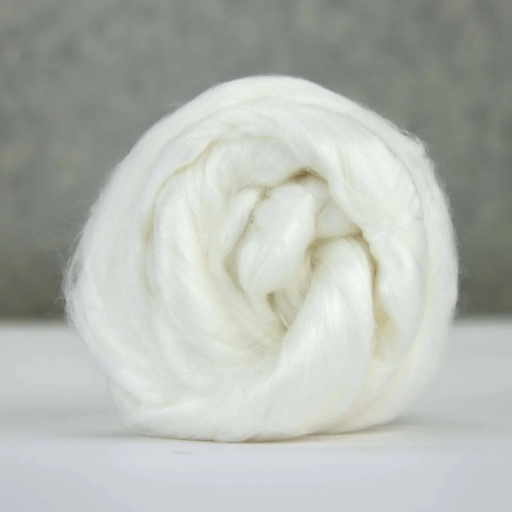
The properties of Viscose also make it an excellent selection for projects. Its softness, breathability, and low price, combined with its softness and elegance simulating silk, make viscose easy to handle. This fabric works well for draping construction textiles and accessories like clothing. The easy dyeing of viscose also provides vibrant centered colors, further beautifying the products.
What are the benefits of using Viscose yarn?
The positive aspects of viscose yarn make it processed in various industries. More details about this are listed underneath:
- Softness and Comfort
Clothing made with viscose yarn is comfortable due to the soft and silky feature it possesses. In addition, it’s much cheaper than silk yet has a similar luxurious feel provided by silk. Moreover, Viscose Fabrics possess a great smoothness like natural luxury fibers, such as silk.
- Breathability
Air permeation is one of the striking features of viscose, as it provides effortless circulation of air and body temperatures in warm humid climates or while exercising.
- Moisture Absorption
Viscose enhances wearer comfort, absorbs moisture at 13% of yarn weight, and enhances sweat absorption, making it an excellent selection for clothing.
- Vibrant Dye Absorption
It is the choice of many designers to produce bold and brilliant pieces of work because the fact that viscose yarn absorbs dyes deep into its structure makes it highly desired.
- Lightweight and Flexible
Viscose branches out to many different kinds of industries due to its lightweight as well as flexibility while also providing supra draping on fabric.
- Eco-Friendly Origins
Viscose yarn is made from renewable sources like wood pulp, bamboo, beech, or eucalyptus. It can have a lower environmental impact when sustainably sourced, and modern manufacturing processes are working on making it greener.
Those attributes make viscose yarn suitable for use in fashion, interior textiles, and other industrial applications, balancing comfort with stylish aesthetics and practicality, both highly valued in the viscose industry.
How does Viscose yarn feel to the touch?
Viscose yarn is famous for its silky and smooth touch, appearing to be soft, smooth, and silk-like. It has a soft and pleasant feel making it suitable for the construction of garments and textiles which have to be worn next to the body and for that, it also needs to be lightweight and breathable. The Yarn–depending on the specific treatment and finishing stage of production–can undergo additional softening or polishing processes that bestow a delicate luster, thereby augmenting its overall beauty and sensory attributes. In addition to that, viscose yarn can create ammonia satin with a soft yet elegant and fluid drape that increases its appeal in sophisticated fabrics and designs.
What types of projects are best suited for Viscose Yarn?
Blouses, dresses, and skirts which can be donned for numerous occasions are elegantly tailored with smooth textured materials to achieve stunning natural shine, and viscose is one of them. Viscose easily absorbs moisture and effectively prevents accumulation of liquids to keep the wearer comfortable during warm weather, which makes it perfect for summer clothing. Apart from garments, viscose yarn is a darling in creating luxurious home textiles for vibrant curtains, intricate pillow covers, and multicolored bed linens. Knitters and crocheters alike have come to appreciate viscose for shawls, scarves, and lightweight cardigans because of the silky finish which adds shine. Not to mention, the ease of use that comes with viscose yarn makes it a great addition to mixed media projects where it can mingle with other materials to add depth and usefulness.
How Does Viscose Blend with Other Fibers?
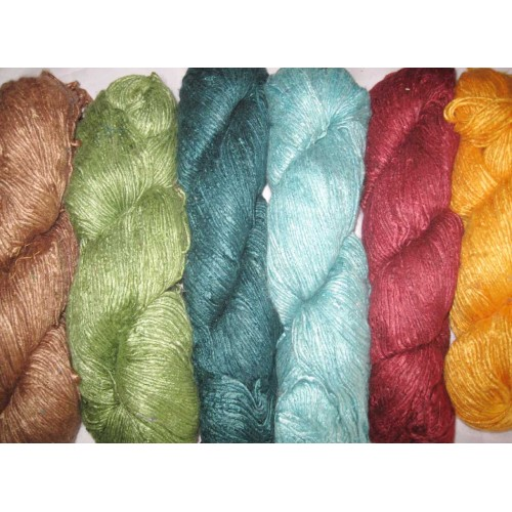
Blended with numerous other fibers, viscose shows superb compatibility and also improves the overall properties of those fibers. If mixed with natural fiber like cotton or wool, blends soft and breathable materials into a comfy and dependable fabric while combining viscose with synthetic fibers like polyester increases the strength, durability, texture and even reduces the wrinkles making the fabric effortless to maintain. These blends are popular in clothing, home textiles and specialty uses where function meets graphic and stylish look.
What is a Viscose and Wool blend?
A wool and viscose blend is a unique blend of both wonders as it creates a lasting and effective material. Wool is regarded for its natural insulation and breathability, as well as its warm and elastic qualities. Likewise, nice silky viscose is revered for its lightweight texture and brilliant dyeability. Combined, these two offer remarkable softness, superb comfort, and draping. This mixture is useful when creating high-end durable suits, stylish sweaters, and elegant coats. Together with those advantages, the blend also is known for retaining its shape and resistance to wrinkling over prolonged periods of use, adding value towards the blend’s quality for use in clothing and accessories.
Can Viscose be blended with Cotton?
Viscose can be combined with cotton to create a blended fabric that harnesses the benefits of both fibers. This blend smoothens the edges visose brings to the both cotton’s breathability, moisture absorption and durability. The fabric becomes softer, more luxurious than one made from cotton alone, enhancing comfort for various uses. The blend of cotton with viscose is popular for cold, casual clothing and other easy-to-wear textiles like shirts, bed linings, and scarves. Moreover, this blend becomes easier to dye, resulting in vivid and vibrant colors that last. The combination of viscose with cotton allows the fabric to be easier to care for and maintain without the high cost of large-scale production, making it cheaper than pure viscose.
Understanding the Durability of Viscose Fabrics
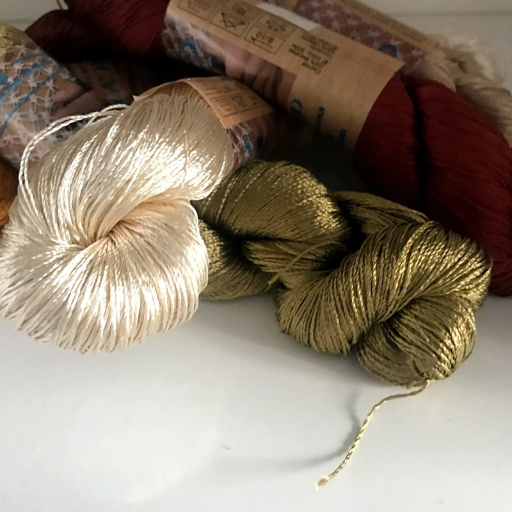
Maintaining the softness and breathability of Viscose fabrics comes at a cost; they need moderate care. Their care depends on the weave quality, fiber length, as well as how the fabric is used. Additionally, non-breathable and weaker viscose fabrics tend to shrink and sustain damage when washed. For these reasons, gentle washing is a must. To improve durability, dry-cleaning is suggested, alongside non-excessive handling in terms of heat and wringing. With these measures, viscose fabrics uphold their shape and gentleness throughout time.
What are the care instructions for Viscose garments?
Clothing made from viscose requires some level of special care in cleaning and upkeep to maintain their texture, appearance, and useful life. Look at the care label on the garment first to see the manufacturer’s instructions because viscose can have different compositions. As a rule of thumb, viscose needs to be hand washed in cold or lukewarm water with a gentle soap. Never scrub, twist, or wring because vigorous movements of such nature damage the fibers and cause deformation.
In case machine washing is permitted entails using a gentle wash cycle setting, buying a low friction laundry bag to protect from excess movement and tumble drying. It is important to remember that bleach and other strong substances are no-go; these greatly reduce the fabric’s life span, weakening it and discoloring it. Once the item is washed, it should remain underlaid with a clean towel to air dry. The towel however, should not be placed under direct exposure to sunlight or hot temperatures to avoid the item shrinking or fading in color. For drying, air is the preferred method. Ironing should be done on low-temperature settings to avoid scorch marks or shine, and the garment must be pressed inside-out. Following these steps ensure that viscose garments retain their softness, breathability, and overall quality.
Is Viscose considered a durable fabric?
Similar to its comfort and luxurious feel, the softness of viscose, a semi-synthetic fabric, comes at a cost. Its possible durability is highly conditional. While undergoing normal use, viscose, a semi-synthetic fabric with a soft touch, is known for its luxurious feel. But like most fabrics, it has its merits and compromises. With low tensile strength, viscose struggles to withstand ripping, especially when wet. This makes it easier to pull apart or stretch than natural fibers like cotton or synthetic options like polyester. Structural integrity can also be impacted by prolonged moisture or exposure to high heat. On the bright side, modern blending production techniques using polyester or elastane alongside viscose are greatly improving its resilience and structural integrity, making the fabric a more reliable option in certain applications, which still requires proper maintenance.
What Patterns and Designs Work Best with Viscose?
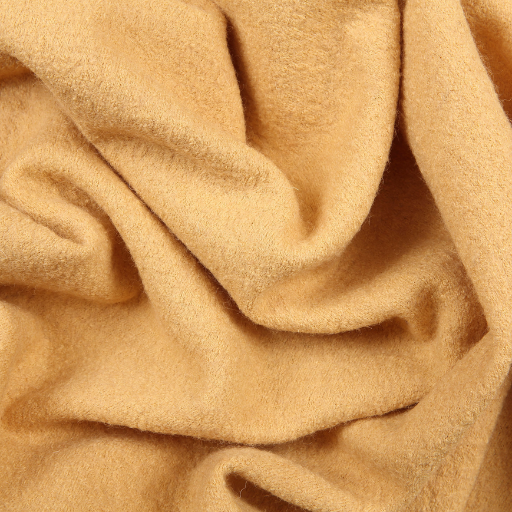
What are popular patterns for Viscose garments?
The dyeing and textile industry have created countless patterns that take advantage of viscose’s ability to capture intricate and eye-catching designs exhibiting floral motifs which as of now, is still a top seller. Timeless florals make for a great choice due to their elegance as these patterns transcend the test of time. Viscose fabric is increasingly common in modern styles which mainly consist of geometric shapes such as stripes, chevrons and abstracted figures. Bold and dynamic appeal is also extended through animal prints including leopard, zebra, and snake. Tropical motifs with palm leaves, infamous exotic flowers, and fauna create a sense of care free warmth which are favored for summer collections. This is a step forward as they can now aid in the creation of summer collections. Beyond vivid, fab Floral patterned viscose garments showcase vivid and intricate designs, and as a result, these stunning patterns leverage the fabric’s fine texture and dye-absorbing properties to remain bold and crisp throughout the test of time.
What design considerations should be noted for Viscose?
Achieving the best results when designing with viscose involves considering its unique properties and limitations. As a semi-synthetic fiber of natural cellulose, viscose is breathable and has a soft, smooth feel. Prolonged use and neglect can lead to shrinkage and wrinkling, cushioned with the use of pre-shrunk materials and proper finishing techniques like steaming or setting. Highly absorbent, viscose is perfect to use for vibrant dyes and intricate prints, although care must be taken during production to stabilize the fabric and help reduce distortion.
Reference Sources
-
- These blends combine the appearance of 100% boiled wool with the added drape and softness of rayon (viscose). They are ideal for jackets, coats, and unlined garments due to their non-fraying nature.
-
- Viscose is often blended with wool to create yarns that are soft, durable, and lustrous. For example, blends like 80% superwash merino wool and 20% bamboo viscose are used for garments and accessories, offering strength and a silky texture.
-
- Viscose yarn is known for its innate softness and silky texture, making it suitable for crafting garments with a gentle feel. It is often blended with other fibers like cotton, silk, and wool to enhance its properties.
Frequently Asked Questions (FAQs)
Q: What is viscose yarn and how is it different from other yarns?
A: Viscose yarn is a type of fiber made from regenerated cellulose, often derived from materials like bamboo or wood pulp. Unlike animal fibers such as merino wool, viscose is a semi-synthetic product that offers a beautiful drape and sheen. It is also lighter than many other yarns, making it a popular choice for garments.
Q: Can you explain the relationship between viscose and rayon?
A: Yes, rayon is a broader category that includes viscose as one of its types. Both are made from cellulose but differ in their manufacturing processes. Viscose is specifically made using a viscous solution, resulting in a soft, smooth fabric often used in knitting and sewing.
Q: How does bamboo viscose compare to traditional viscose?
A: Bamboo viscose is a specific type of viscose made from bamboo fibers. It tends to be more environmentally friendly due to the sustainable growth of bamboo. Additionally, bamboo viscose has natural antibacterial properties and is often softer than traditional viscose, making it a great choice for comfortable knitwear.
Q: Is viscose yarn suitable for all types of knitting projects?
A: Viscose yarn is versatile and can be used for a variety of projects, but it is particularly well-suited for lightweight garments and accessories. Due to its drape, it works beautifully for wraps and flowy tops, though it may not hold shape as well as heavier yarns like merino wool.
Q: What weight of viscose yarn should I use for my project?
A: The weight of viscose yarn can vary, just like other yarn types. For lighter projects like summer tops or shawls, you might choose a DK or sport weight yarn. For heavier items like cardigans, a worsted weight may be more appropriate. Always check your pattern requirements to know the difference in weights.
Q: How do I care for garments made with viscose yarn?
A: Garments made with viscose yarn should typically be hand-washed in cold water and laid flat to dry. Avoid wringing or twisting the fabric, as this can cause it to lose its shape. Some viscose yarns may also be machine-washable, but always refer to the product label for specific care instructions.
Q: What are the benefits of blending viscose with other fibers like polyamide or modal?
A: Blending viscose with fibers like polyamide or modal enhances the durability and elasticity of the yarn. This blend can create fabrics that retain their shape better, resist wrinkles, and provide a more vibrant color palette, making them ideal for various fashion applications.
Q: Can I dye viscose yarn to achieve vibrant colors?
A: Yes, viscose yarn can be dyed quite easily, allowing for vibrant colors that can enhance your finished projects. However, it’s important to use dyes specifically designed for cellulosic fibers to ensure even coloring and to follow the dyeing instructions carefully.








